Mansehra’s Shiv temple
By Asif Nawaz
The Friday Times : 14 Aug 2015
An emblem of Hindus’ survival stretching back three millennia. Asif Nawaz with the images

Bell at the temple
Despite Hindus being Pakistan’s largest religious minority, their presence is conspicuously marred by the more evident Christian minority. The reason being concentration of Hindus in the Southern provinces, and perhaps their low-profile in other areas, deliberately maintained in order to avoid persecution.
In light of the threat to their existence, and unfortunate attacks at some temples, visiting a Hindu temple is denied to most Muslims in Pakistan – especially in the cities. The temples in towns and hamlets are way more lax when it comes to admission rights. This marks another contradiction with the Christians: you can find a major Church in almost every city of Pakistan, and entry for Muslims is way more relaxed.
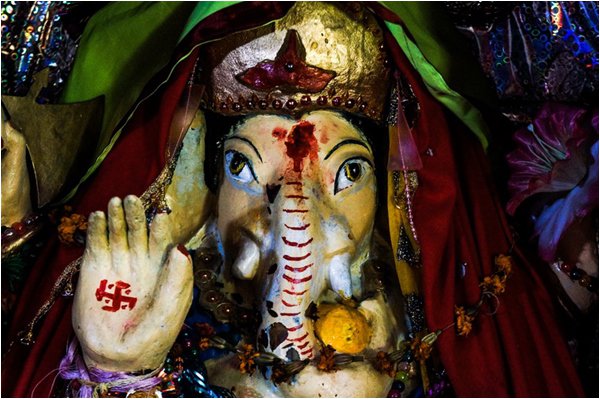
Ganesha
In my city, Abbottabad, there are two functioning Christian churches, while not a single temple. Therefore, I was extremely surprised when I came to know about the Shiv Temple in Chitti Gatti – at a distance of about 15 kilometres from Mansehra – which is not only an emblem of Hindus’ survival in the area but also has immense historical importance.
The village of Chitti Gatti is nestled between swathes of fields and a river. The temple is elevated just besides the main Karakoram Highway. At first glance the building is a simple structure, and you can easily mistake it for a mosque (an attempt to avoid unwanted attention). However, it’s the interior of the temple that highlights its maintenance and houses the 3,000-year-old Shiva Lingam – the oldest in Pakistan and arguably one of the oldest Hindu structures in the whole region. It is a site held holy by many Hindus, which witnesses an annual festival at Shivraatri, around February, where a number of Hindus from Pakistan, as well as abroad, pay a pilgrimage.

Calendar with multiple Hindu deities
You can easily mistake it for a mosque
The temple remains locked otherwise, since there are no Hindus in the adjoining areas to visit regularly – but a visit is possible for Hindus whenever they come. It is open to others as well after preliminary identity checks. The caretaker of the temple is welcoming and facilitates your visit. Moreover, a constable of Khyber Pakhtunkhwa police always remains deployed at the temple. The number of security personnel is greatly augmented at times of festivity.
Entry to the temple is via a second storey, since the locked ground floor basically contains the mound that the Shiva Lingam is perched on top of. According to a legend the Lingam emerged from the ground spontaneously thousands of years ago, and has continued in this state. The inside of the temple essentially comprises a hall; that contains impressive statues of the Hindu deity Ganesha and Krishna’s cow, Nandi. Besides these, there are various posters and hangings of others including Shiv, Parvati, Kali and those of Hindu local organizations and groups.

The temple
For most part, the place is clean, well-kept and spacious yet quite simple in appeal. The Shiva Lingam, however, is present within yet another room bound by glass present in the center of the main hall. Access to this, then, is limited only to the Hindus. The key to the glass chamber is kept by the Shiv Temple Society.
While pointing to a burnt patch on the ground, the constable narrated stories of various Hindu families that visit frequently. He also narrated the tale of a pre-partition brawl in the area between local Hindus and Muslims.
“The Muslims attacked the Shiva Lingam, and were adamant on uprooting the Lingam”, he said. “However, no matter what they did, they couldn’t move it an inch!” Marks of a struggle atop the Lingam established his story. Thankfully though, there have been absolutely no untoward incidents in the temple after Partition.

Traditional earthen pots for prayers
The caretaker of the temple is welcoming and facilitates your visit
The ostensible threats were denied were by those in-charge, and the constable expressed the stern will of local authorities to protect the temple. “Yeh aqliaton ki jaga hai, yahan kuch ho gaya tou poora mulk hil jayega!” (This is a place of minorities, if something happens here, it will shake the whole country).
It is experiences like these that revive your faith in this country in strange ways. While the temples in the secular, Sufi-inspired Sindh are being attacked lately, the Shiv Temple in this relatively troubled province of mine remains excessively secure.

Shiva Lingam
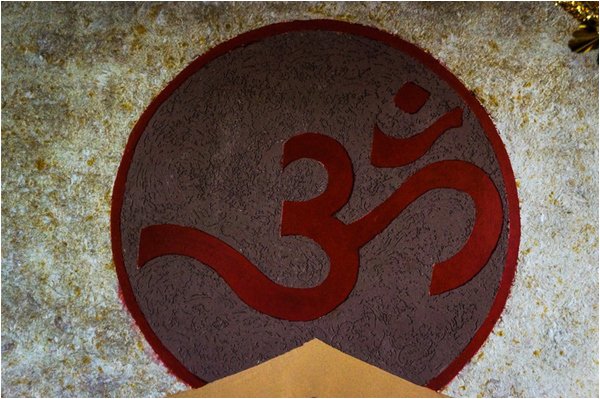
The Muslims wanted to uproot the Lingam
Also welcome were the comments of our hosts. Both were Muslims, and no ill-felt comment was made. There was no Hindu-bashing, and no conceited contempt was found in their words. “They are good people. They believe what they think is right, and it’s up to them. Whenever they come, they sit with us and talk. They are pleasant. Yes, they don’t eat what we cook and vice versa. But we drink water together.”
A family of liberalism gone awry, and some segments of media might tell you otherwise, but this is as true (and warming) as it gets.
However, not everything is smooth sailing. This came out a bit too evidently when I talked to Mr Darshan Lal from the Shiv Temple Society – a person largely responsible for all the major matters of the temple, and the de facto caretaker. The absolute apathy of the government towards the site was a constant complaint. Indeed, most of the renovation and construction work at the temple is brought about by the funding of Hindu groups, occasionally aided by sympathetic Muslims.
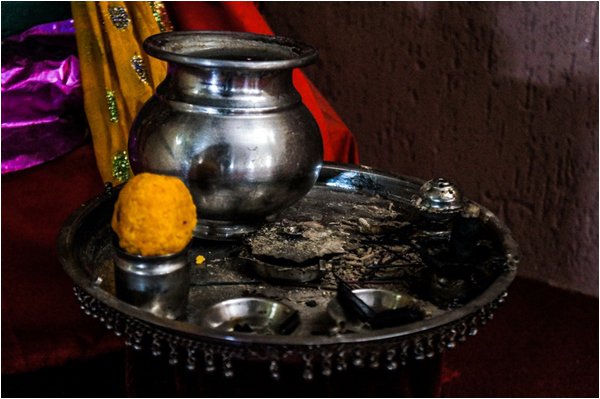
The prayer thaali
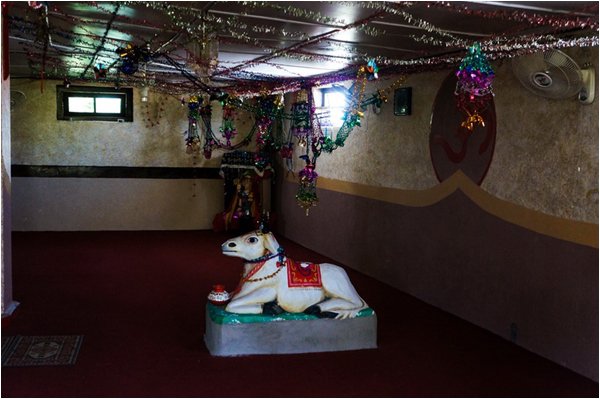
Krishna’s cow, Nandi
“The Hindus give us something whenever they come. Some educated Muslims also pitch in some contributions at times”, said Mr Lal. The land of the temple is yet another pressing issue. The temple stands on disputed property, and the claimants of the land are many. Mr Lal admitted having written letters to the government for solving this dispute, to no avail.
He also complained about there being absolutely no facilities for those who come for a visit (something I am a witness of). He pointed towards the absence of washrooms, availability of food and any place to stay. This, he said, creates problems, especially for families. All the visitors have to adjust themselves somehow on the ground, and bring/cook their own food.
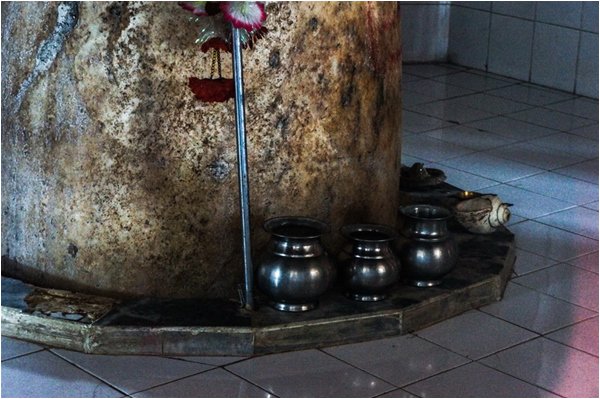
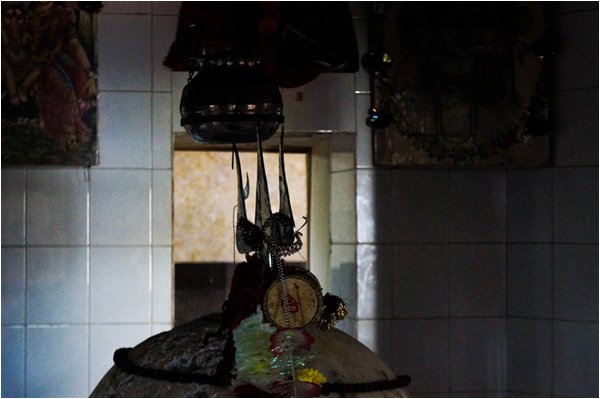
Shiva Lingam
Mr Lal was very vocal about the negligence of the government, saying that the government does not do anything at all for the temple. He made an appeal for help – particularly the educated community that understands the importance and worth of this national and religious heritage. (The Shiv Temple Society is based in Abbottabad – and details can be provided to those willing to help).
Moreover, conspiracy theories are also afloat about the government of India expressing a lot of interest in the Shiva Lingam, and some talks underway of selling it – which, honestly, seems a bit too dramatic and far-fetched.
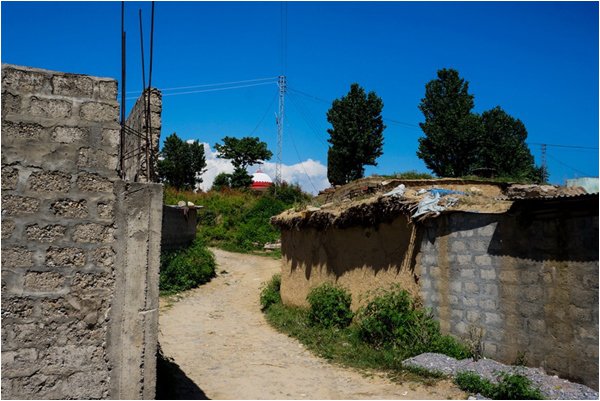
Chitti Gatti
The Shiva Temple at Chitti Gatti might not be the most impressive Hindu temple there is, but is a pleasant and much-needed respite from the usual humdrum. An island of peace in a sea of chaos and half-baked sensationalism, it reminds you of the ideas of equality and brotherhood that this country was built upon, and strikes just about the right chords.
Accordingly, it then restores your faith in the promise of this country. Despite all the problems the temple faces, something tells me the Quaid would’ve been proud – because as far at this Shiva Temple is concerned, you are definitely “free to go to your temples”! It’s for us to make sure this freedom is upheld.